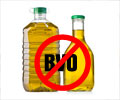Expiry Dates or Date Stamps - What Do They Mean?
A variety of terminology is used by food product manufacturers to describe the freshness of the product.
Avoid a packaged food product which doesn’t have a label for freshness. If the date stamp or “expiry date” of the product is accidentally wiped off or is not readable and you trust the store you are getting the item from, look for unpleasant odor or change in the color of the product. Don’t buy a tetra pack product that is puffed up – it indicates spoilt food inside.
You will come across at least one of the below mentioned label indicating the best period of consumption for the product.
"Sell by" date: This date is the manufacturer''s indication to the retailer. It instructs the stores when to remove or pull off the product from the shelf. This is merely a recommendation, not a legal requirement. Since the "sell by" date is indicative of the food’s quality rather than the safety, the product still remains edible post that date (usually for about 5 days or so). However, it might not taste as fresh or have the same consistency and texture. So, prefer buying the food before that date.
"Best if used by/ before)" date or "use by" date: Just like the "sell by" date, this is again a quality rather than safety issue. This date refers to the peak flavor and freshness of the product determined by the manufacturer.
"Packed on" date: This date is generally used for fresh meat products and tells the consumers when the meat was packaged.
"Guaranteed fresh" date: This is used for baked goods and refers to its freshness, for example breads and other baked items. Products bought or eaten after this date will still be edible but they may become less appealing to taste buds.
"Expiration" or "expiry" date: This date is a strict safety issue and indicates the last day by which the product should be consumed.















READ FOOD LEBELS BEFORE YOU BUY THE FOOD PRODUCT